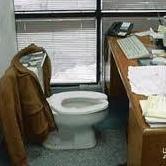Leaderboard
Popular Content
Showing content with the highest reputation on 02/19/2014 in Posts
-
by S. Miguel Reyna, CPA On Sept. 13, 2013, the IRS released final regulations providing guidance on the deduction and capitalization of expenditures in acquiring, producing, and maintaining or repairing tangible property (T.D. 9636). The new rules, commonly called the repair regulations, replace previously issued temporary regulations and attempt to clarify Sec. 263(a), which requires the capitalization of the amount paid to acquire, produce, or improve tangible property; and Sec. 162(a), which allows deduction of ordinary and business expenses. The final regulations are generally effective for tax years beginning on or after Jan. 1, 2014. Taxpayers may generally apply the provisions to tax years beginning on or after Jan. 1, 2012, although some of the provisions can only be applied to expenses paid or incurred in tax years beginning on or after Jan. 1, 2014. Following are a few highlights of the repair regulations. General capitalization As a general rule, all costs that facilitate the acquisition or production of real or personal property must be capitalized except for employee compensation and overhead costs. Under final regulations, a taxpayer must capitalize amounts paid to acquire or produce a unit of property (UOP) unless the expense qualifies as a material or supply or the de minimis safe harbor election applies. This includes leasehold improvements, land and land improvements, buildings, machinery and equipment, and furniture and fixtures. The amounts paid to acquire or produce a unit of real or personal property include the invoice price and transaction costs. Repairs and maintenance In general, under the safe-harbor election for routine maintenance, a taxpayer may deduct amounts paid for repairs and maintenance to property other than a building or the structural components of a building if the activities occur more than once during the useful life of the unit of property and the amounts paid are not otherwise required to be capitalized, such as betterments, restorations, and adaptations to a new or different use. The final regulations extend the concept of the routine maintenance safe harbor introduced by the 2011 temporary regulations to buildings. This includes the recurring activities that a taxpayer expects to perform as a result of its use of the building to keep the building structure or system in its ordinarily efficient operating condition. The taxpayer must reasonably expect to perform the activities more than once during a 10-year period beginning at the time the building structure or building system is placed in service. Materials and supplies The final regulations expand the definition of materials and supplies to include property that has an acquisition or production cost of $200 or less, clarify application of the optional method of accounting for rotable and temporary spare parts, and simplify the application of the de minimis safe harbor of Regs. Sec. 1.263(a)-1(f) to include materials and supplies. De minimis safe harbor An alternative to the general capitalization rule is the de minimis safe-harbor election, which allows businesses to elect to expense qualifying expenses such as amounts paid to acquire or produce any eligible unit of property or any eligible materials and supplies. A taxpayer is eligible for the de minimis safe-harbor election if the taxpayer meets all three of the following: At the beginning of the year the taxpayer has written accounting procedures opting to expense for nontax purposes, such as book financials, amounts paid for property costing less than a specified dollar amount or acquisitions with an economic useful life of 12 months or less. The taxpayer treats the amount paid for the property as an expense on its applicable financial statements (AFSs) if it has AFSs or on its books and records if it does not. The taxpayer has an AFS and the amount paid for the property does not exceed $5,000 per invoice. If the taxpayer does not have an AFS, the amount cannot exceed $500. It should be noted that the $5,000/$500 limit is a safe harbor rather than an absolute limit. It is not intended that IRS examining agents must revise the taxpayers’ materiality thresholds in accordance with the de minimis safe-harbor limitations. Therefore, if examining agents and a taxpayer agree that certain amounts in excess of the de minimis safe-harbor limitations are not material or otherwise should not be subject to review, that agreement should be respected despite the requirements of the de minimis safe harbor. However, a taxpayer that tries to deduct amounts in excess of the amount allowed by the safe harbor has the burden of showing that such treatment clearly reflects income. Property ineligible for de minimis safe harbor election includes: Property that is or is intended to be included in inventory; Land; Rotable, temporary, and standby emergency spare parts that the taxpayer elects to capitalize and depreciate; and Rotable and temporary spare parts that the taxpayer accounts for under the optional method of accounting for rotable parts. The de minimis safe-harbor election is made by attaching a statement to the taxpayer’s timely filed federal tax return including extensions. The statement must be titled “Section 1.263(a)–1(f) de minimis safe harbor election” and include the taxpayer’s name, address, taxpayer identification number (TIN), and a statement that the taxpayer is making the de minimis safe-harbor election. Editor’s note: This column provides a snapshot look at some aspects of the repair regulations. Topics not covered include: Disposals of MACRS property; Costs to investigate and pursue the purchase of real property; Expenditures for property on which a casualty loss has been deducted; Costs subject to capitalization under Sec. 263A; Regulatory accounting methods; and Costs paid to facilitate the sale of property4 points
-
my bank just informed me that as of 3/18 I have to keep a $25,000 balance to avoid a newly imposed $35 a month service charge for an account which for over 15 years has been free. My assistant was given the task of finding us a new bank; we go Sturday to interview the new, local, bank to open a new account there,4 points
-
Remember this when dealing with stupid, argumentative people and clients -3 points
-
Some of the memory foam mattresses are so heavy that your cash could be considered safer there -- no thief could get to it!3 points
-
Speaking of wierd client interactions, a very elegant lady just walked into my office to inquire if I would be wiling to consult with her on her tax return because she did a "simple 1031 exchange" last year and isn't sure how to handle THAT PART of her return. Ignoring the fact that I won't prepare PART OF a return, I explained that I looked into doing some dedicated work on 1031 exchanges several years ago, and after becoming aware of all the pitfalls I decided to avoid them altogether. SO I'm not the person she needs to be speaking with. Naturally, it didn't end there. So we talked about 15 minutes about other rental properties she owns (more red flags for me), and something a little unusual about this "simple" 1031 exchange she failed to mention at the outset (something which might in fact blow the whole deal for her if it's ever examined). I wished her well, and as she was leaving she mentioned that maybe I should "read up on 1031 exchanges so I could help out if someone came in with the same questions in the future". "Thanks for the advice, ma'am, but that particular train left the station long before you came in my door - did you miss the part where I said I DECIDED years ago not to do that very thing?". It's obvious once again that people frequently only hear what they want to hear. Fortunately there are no papers to return in this case since I never accepted any from her. Didn't even ask her name. And best of all, I had not given her a business card. I've learned not to be so quick to hand out that card until I know a little more about the situation. (It would have been awkward asking her to return the business card as she left my office).3 points
-
You have my sympathy. It is especially disheartening when you either lose a good worker or have one get distracted and no longer performing well. It was my least favorite part of the tax business. I found it paid to spend money on better equipment to reduce the need for help, because it's so hard to find good workers.2 points
-
So at church this morning, the Pastor says in his sermon that we are going to get audited by God some day. On the way home, my 18 year old son says he isn't worried about that audit because he will have a mileage log and his receipts when he gets there. He must be listening more than my wife and I think when we talk about clients at home. Tom Hollister, CA2 points
-
Agree with no phone cost in this case (although earlier mention of add-on features would be taken by me). As far as IHO - agreed that not possible as the sq. ft. would definitely not be worth the time in this case. There is a big difference between being an employee and running a business --- so always think on the TWO DIFFERENT concepts and requirements. Going to a job is commuting BUT running a business may be something entirely different and the concepts, etc. stand alone /// Look at each separately, as if neither effected the other. Also, no one has discussed the reasonable and necessary wording on ANY business, especially as pertains to Home BUSINESS ---- is it reasonable for her to conduct the business without the mileage (going to shows, etc.), --- my reason says NO -- so therefore it is reasonable for the mileage ---- reasonable and necessary (not always normal perhaps) but if it meets this test, then yes I would deduct it and since I believe I would "win" at an audit --- I am also protected by NOT being frivolous. If the client has a reasonable expectation of profit (even if it takes decades) and does the "business" as a business -- then reasonable and necessary make a BIG part of the discussion and determination.2 points
-
February 18, 2014 By Jim Buttonow and Mark Bowles As part of its efforts to upgrade electronic customer service, the IRS recently gave individual taxpayers online access to their IRS transcripts, which are computer-generated reports that show information on tax filings and IRS account activity. Transcripts can also provide information to help taxpayers resolve many tax notices and issues. Before the IRS provided this online tool, obtaining IRS transcripts was a manual process for taxpayers. They had to call the IRS, mail in a form, or use an online request for mailed transcripts that typically took at least seven days to arrive. Now, taxpayers can set up a personal account with the IRS to view the five types of transcripts right away. With this new tool, more taxpayers will be accessing their tax information online – and many of those taxpayers will be viewing their IRS transcripts for the first time. Because IRS transcripts are not made for easy interpretation, many taxpayers accessing their transcripts will have more questions than answers. Be prepared to help your clients understand the information available to them and translate the sometimes cryptic information contained in IRS transcripts. Here are some common questions your clients will have about IRS transcripts, and how you can answer them. Who can get transcripts online? The IRS Get Transcript tool is available only to individual taxpayers. Business taxpayers can call the IRS at (800) 829-4933, and tax professionals can call the Practitioner Priority Service at (866) 860-4259, option 4, to request IRS transcripts. What are the types of transcripts? There are five types of IRS transcripts, which taxpayers can now access online: 1. An account transcript provides an overview of your account. It shows filings, extensions, withholding, credits and any follow-up transactions on your account, including penalties, assessments, IRS inquiries and other account activity. Basically, if there have been any IRS actions on your account, they will appear on this transcript. 2. A return transcript shows most lines from the original tax return as it was processed. Changes made to the return after it was processed are not reflected, including any amended returns filed. If you need a copy of your tax return for any reason, such as a loan or financial aid application, this is the transcript to use. 3. A record of account transcript is simply a combination of the account and return transcripts. The IRS makes this available because it shows the big picture, from your original return filed to any changes made to the return after processing. 4. A wage and income transcript provides a listing of information statements (Forms W-2, 1099) that show income reported to the IRS under your Social Security number. You can use this transcript to help with your due diligence in filing an extended tax return, verify employment, or keep a personal record of income. 5. A verification of nonfiling letter is a transcript that is automatically produced when the IRS does not have your return on file or has not yet processed your filed return. What years are available for each type of transcript? The IRS generates separate transcripts for each tax year. In the IRS Get Transcript tool, each transcript is available as a separate link, listed by tax year. The following years are available for the five types of IRS transcripts: Account transcripts: Current tax year and three prior tax years. Older account transcripts can appear if there has been activity within the past three years on the account. Return transcripts: Current tax year and three prior tax years. If you don’t see a return transcript available for download, it likely means that no return was filed for that year, or that the IRS has not processed the return. Record of account transcripts: Current tax year and three prior tax years. Wage and income transcripts: Current tax year and nine prior tax years. In mid-May, wage and income transcripts become available for the previous tax year. For example, 2013 wage and income transcripts will be available in May 2014. Verification of nonfiling letter: Current tax year and three prior tax years. Why don’t my tax return transcript and account transcript reflect the return I have filed? Your filed return isn’t reflected on your transcripts yet because the IRS has not finished processing the return. Your return should post to your account transcript in about one week. The return transcript takes longer for the IRS to post to your account. What do the transaction codes mean on my account transcript? Transcript transaction codes represent actions on your IRS account and provide a literal description of the action. For routine filers with no post-filing compliance activity, account transcripts are typically easy to interpret. However, if you have post-filing compliance activity, such as tax notices and correspondence back and forth with the IRS, transcripts can be confusing. The IRS Transaction Codes Pocket Guide offers explanations for transaction codes, but tax practitioners and taxpayers who use the guide can still misinterpret codes and draw the wrong conclusions. Some transaction codes are particularly confusing to taxpayers and tax professionals because the IRS uses them to record many types of actions. The two most common examples are Transaction Codes 971 and 290: For 2009 returns, the IRS used TC 971 to represent changes made to the first-time homebuyer credit. However, because TC 971 is used for miscellaneous transactions, and the IRS explanation for this transaction code was not updated with tax law changes in 2010, the IRS description stated that there was a challenge to the Earned Income Tax Credit. TC 290, “Additional tax assessment,” often appears on transcripts with no additional tax assessment, confusing taxpayers and tax professionals about what is happening on the account. If you find a confusing transaction code, your tax professional should call the Practitioner Priority Service at (866) 860-4259 to find out what’s actually happening on the account. Can my account transcript tell me if I am selected for audit? Every year, the IRS selects millions of returns for examination, but audits only a fraction of those selected. If you see TC 420, “Examination of tax return,” on your account transcript, it doesn’t necessarily mean you’ll be audited. If you’re actually being audited, you'll receive a separate notice from the IRS. Generally, the IRS will initiate an examination within a year after the return is filed. With limited resources, the IRS can’t help all of the taxpayers who contact the agency with questions. To lighten its customer service burden and meet increasing taxpayer demand for online tools, the IRS will continue to develop and enhance online tools for taxpayers. And, as taxpayers have more access to their online IRS information, they will have more questions for their tax professionals. You can help your clients understand the information on their accounts and reaffirm your role as their trusted tax advisor. Jim Buttonow, CPA.CITP, is cofounder of Beyond415. He has more than 26 years of experience in IRS practice and procedure. Reach Jim at [email protected]. Mark Bowles is tax procedures editor at Beyond415 and specializes in tax authorizations and IRS account research. Reach Mark at [email protected].1 point
-
I'd tell the client to keep the $20 and forget about it. If IRS ever discovers their mistake, they will ask for the money back. Or,if the client wants me to straighten it out, I will write all the letters they want at $50 each. They can decide when enough is enough.1 point
-
On the third section of the Home Office Allocation Worksheet, did you select the 2106 in the drop-down box for business activity.1 point
-
Haha, I just thought of something funny about my title for this topic. Maybe it should have said "graphic contains fowl language."1 point
-
>>>Can't they determine that each member has a 50% interest in profits and losses?<<< This type of proportioning is permitted and is determined by the partners. But if a partner has no basis, then he cannot share in the losses. Losses can only be taken up to the amount of the partner's outside basis. This is why I'm saying he needs to make some type of investment or the father gifts him something or 50% interest in the property.1 point
-
Filing the 6252 is the notification. And I'd go with "Sale of Business Name & Goodwill".1 point
-
Samsclub has this fire-proof safe for $40, I was going to buy one but when I tried picking up the box I changed my mind, the $40 is not worth luging this heavy item.1 point
-
1 point
-
Agree with Marilyn IF no reimbursement for expenses had been made. However, given the reimbursement for expenses, I agree with KC in this particular situation.1 point
-
Move every cent of business from them. They have obviously forgotten who pays who's paycheck and have no clue about customer service or loyalty. It is the exact same disease that is permeating the big banks everywhere. Look local, consider credit unions. We have had much luck there.1 point
-
I use a small local hometown bank. I have NEVER been asked for ID when making a deposit. Big banks have forgotten who is the customer. When my kids were still in college, we would regularly make deposits into their checking account. I suppose those banks asking ID would not allow such? Monster size banks, monster size attitude, customer service non-existent. It is why we left the big bank 8 years ago.1 point
-
I feel your pain - I told them I was going to post the ABC's like in kindergarten and at the very least could they sing the A B C song!1 point
-
That seems to be the biggest change from prior years on the backup (I know Jack - forget everything you know about prior versions of ATX). But you will see the green bar showing you the progress of the backup. I don't really understand all the techie terms for what is going on, but selecting returns to backup is not how it is done anymore. Tom Hollister, CA1 point
-
Change banks. Make it known to the branch manager that you are and why you are. Too many banks that will appreciate your business.1 point
-
Oh, pardon me. I guess it's becoming obvious that one of us can't read very well. I did look it up, and apparently Pub 587 is in error in calling it an "exception" "Exceptions to Exclusive Use You do not have to meet the exclusive use test if either of the following applies. You use part of your home for the storage of inventory or product samples (discussed next). You use part of your home as a daycare facility, discussed later under Daycare Facility ." But I guess I should follow your wording rather than the Publication you suggested that I read, so I'll withdraw the use of the word "exception" if it bothers you.1 point
-
I agree with Jack, but make sure you get a copy of the property settlement agreement and see what language was actually used regarding the $10,000. I don't ever trust what clients tell me when they are interpreting legal documents.1 point
-
The only amounts that can be claimed as alimony are the amounts specifically designated in the divorce decree. Period! We had a client that reported larger amounts to us for several years on his attorney's advice. IRS asked for the decree and disallowed any amounts above what was specifically spelled out in the decree. Most lawyers are clueless about tax law. Do not follow the attorney's advice. IRS sees it differently.1 point
-
I am so sick of snow. I know I live in a "lake effect" area, but this year I can't wait for spring! We put 4 snow tires on each of our vehicles. 2 vehicles carry my 2 college student daughters to campus everyday. My car 8 yrs and the only manual transmission is great in the snow, but I worry every day with them driving. Please see picture from our back yard this AM. I wish they would let me hand deliver the Hawaii Corporate Tax Return at work... Snow is thigh high in the driveway.. And this mornings Temperature (02/17/2014) was -15 degrees - I can't wait for winter to be over! Thank you Catherine for the heads up attaching a picture, Brain was not working last night..1 point
-
Keep track of time expended and charge an hourly rate. Some clients give you everything ready to go and you can crank out 20-30 in a short period of time, including cross checking and submitting the IRS copies. Others could take hours for the same task if their records are sloppy.1 point
-
There are a few things which can cause the ATX database server to be inaccessible for the ATX program. These can range from anti-virus, to firewall, to sleep state within the computer (i.e. if your computer is set to go to sleep mode at the 10 min mark of inactivity, the ATX service can shut itself off), to other, more mundane issues. WITaxLady, does restarting the ATX 2013 Service in Admin Tools> Services help you any?1 point
-
ONE MORE TIME!! This error is NOT related to the servers at ATX! The "server program" that is installed on every system and network is the one that cannot be connected to. The term server has several definitions and each definition and attribute to the word is different. This confusion of definitions is causing tons of trouble with ATX users who are not as tech savvy as some of the rest of us. I have been getting deflective and double talk answers from tech support and the developers. It is as if they do not want anyone to know that there is a problem and a solution. The "system is not up to requirements" is male bovine scat as I have systems well ABOVE the recommendations that are having the same problem. I call B.S. on the equipment dodge by the tech people. I hope someone from ATX is watching here because I am about to send it to them in an e-mail as well. CCH corporate personality is shining brightly again!! They still don't get it!!!1 point














